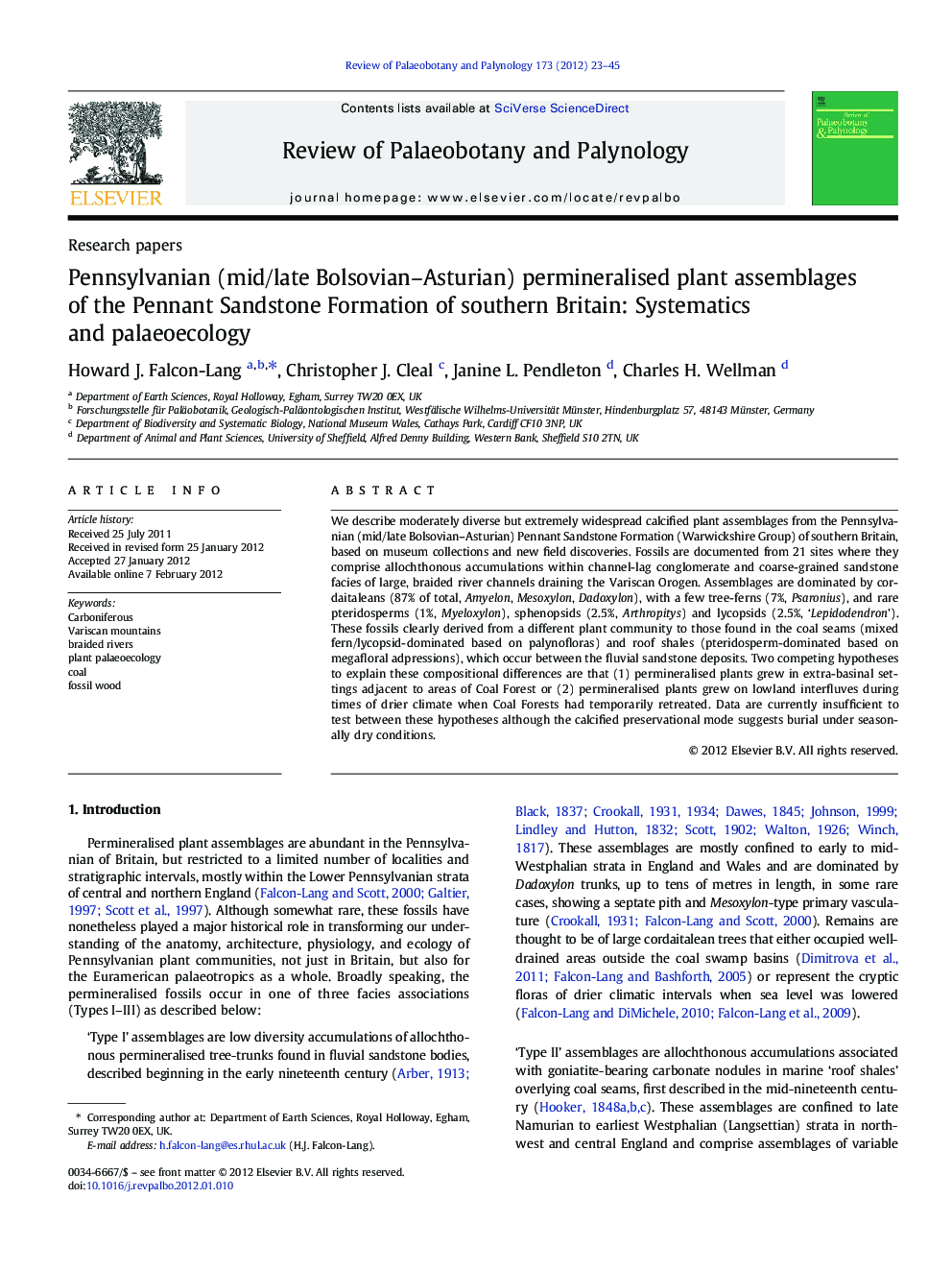| Article ID | Journal | Published Year | Pages | File Type |
|---|---|---|---|---|
| 4750466 | Review of Palaeobotany and Palynology | 2012 | 23 Pages |
We describe moderately diverse but extremely widespread calcified plant assemblages from the Pennsylvanian (mid/late Bolsovian–Asturian) Pennant Sandstone Formation (Warwickshire Group) of southern Britain, based on museum collections and new field discoveries. Fossils are documented from 21 sites where they comprise allochthonous accumulations within channel-lag conglomerate and coarse-grained sandstone facies of large, braided river channels draining the Variscan Orogen. Assemblages are dominated by cordaitaleans (87% of total, Amyelon, Mesoxylon, Dadoxylon), with a few tree-ferns (7%, Psaronius), and rare pteridosperms (1%, Myeloxylon), sphenopsids (2.5%, Arthropitys) and lycopsids (2.5%, ‘Lepidodendron’). These fossils clearly derived from a different plant community to those found in the coal seams (mixed fern/lycopsid-dominated based on palynofloras) and roof shales (pteridosperm-dominated based on megafloral adpressions), which occur between the fluvial sandstone deposits. Two competing hypotheses to explain these compositional differences are that (1) permineralised plants grew in extra-basinal settings adjacent to areas of Coal Forest or (2) permineralised plants grew on lowland interfluves during times of drier climate when Coal Forests had temporarily retreated. Data are currently insufficient to test between these hypotheses although the calcified preservational mode suggests burial under seasonally dry conditions.
► We describe a Pennsylvanian permineralised plant assemblage from southern Britain. ► It is the youngest permineralised plant assemblage from the British Pennsylvanian. ► The assemblage is cordaitalean-dominated, with only a few pteridophytes. ► It may represent a subhumid dryland flora, or an extra-basinal community.
